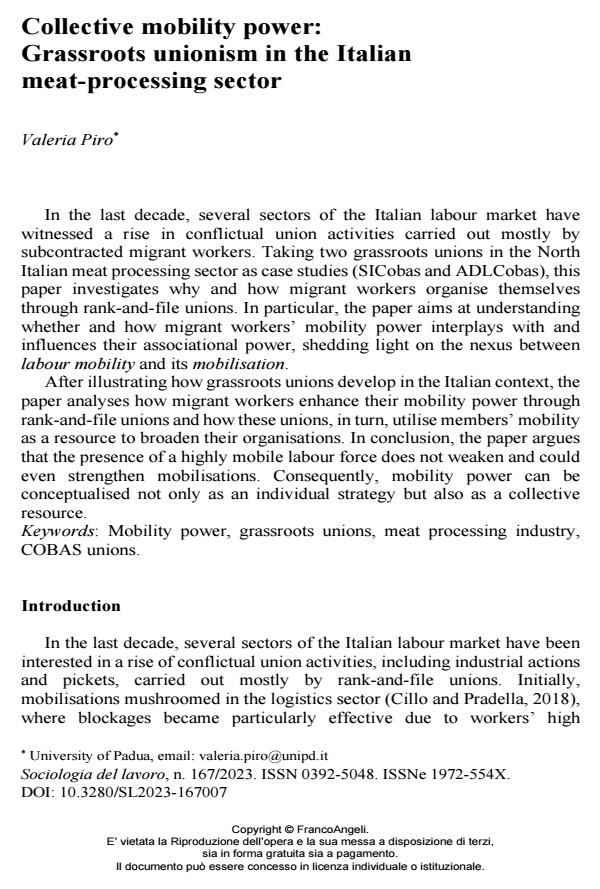Collective mobility power: Grassroots unionism in the Italian meat-processing sector
Titolo Rivista SOCIOLOGIA DEL LAVORO
Autori/Curatori Valeria Piro
Anno di pubblicazione 2024 Fascicolo 2023/167
Lingua Inglese Numero pagine 22 P. 141-162 Dimensione file 255 KB
DOI 10.3280/SL2023-167007
Il DOI è il codice a barre della proprietà intellettuale: per saperne di più
clicca qui
Qui sotto puoi vedere in anteprima la prima pagina di questo articolo.
Se questo articolo ti interessa, lo puoi acquistare (e scaricare in formato pdf) seguendo le facili indicazioni per acquistare il download credit. Acquista Download Credits per scaricare questo Articolo in formato PDF

FrancoAngeli è membro della Publishers International Linking Association, Inc (PILA)associazione indipendente e non profit per facilitare (attraverso i servizi tecnologici implementati da CrossRef.org) l’accesso degli studiosi ai contenuti digitali nelle pubblicazioni professionali e scientifiche
In the last decade, several sectors of the Italian labour market have witnessed a rise in conflictual union activities carried out mostly by subcontracted migrant workers. Taking two grassroots unions in the North Italian meat processing sector as case studies (SICobas and ADLCobas), this paper investigates why and how migrant workers organise themselves through rank-and-file unions. In particular, the paper aims at understanding whether and how migrant workers’ mobility power interplays with and influences their associational power, shedding light on the nexus between labour mobility and its mobilisation. After illustrating how grassroots unions develop in the Italian context, the paper analyses how migrant workers enhance their mobility power through rank-and-file unions and how these unions, in turn, utilise members’ mobility as a resource to broaden their organisations. In conclusion, the paper argues that the presence of a highly mobile labour force does not weaken and could even strengthen mobilisations. Consequently, mobility power can be conceptualised not only as an individual strategy but also as a collective resource.
Parole chiave:Mobility power, grassroots unions, meat processing industry, COBAS unions.
Valeria Piro, Collective mobility power: Grassroots unionism in the Italian meat-processing sector in "SOCIOLOGIA DEL LAVORO " 167/2023, pp 141-162, DOI: 10.3280/SL2023-167007